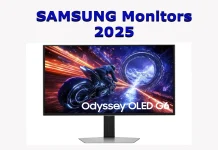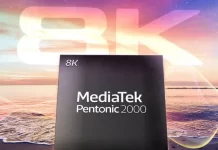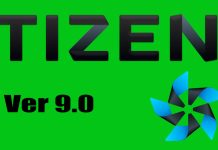Few people consider the HDCP version present in the HDMI ports of their TV or streaming devices like Roku or Fire Stick. However, this oversight can lead to frustrating HDCP errors at the most inconvenient moments. It’s essential to understand that not all HDCP versions are fully compatible, and some may only offer partial compatibility.
HDCP versions of HDMI ports
This table summarizes the available HDCP versions. It is important to note that there is no explicit requirement that HDCP must match the HDMI version. As a result, you may encounter a device equipped with an HDMI 2.0 port that supports HDCP 2.3, and conversely, an HDMI 2.1 port may be equipped with HDCP 2.2. Ultimately, compatibility depends on the specific HDCP chip that the manufacturer has installed in the HDMI ports.
| HDCP Version | HDMI Version | Compatibility | Supported Content |
|---|---|---|---|
| HDCP 1.0 – 1.3 | HDMI 1.0 – 1.3 | Compatible with HDCP 1.x displays and devices | Supports standard-definition (SD) and high-definition (HD) content up to 1080p |
| HDCP 1.4 | HDMI 1.4 | Compatible with HDCP 1.4 displays and devices | Supports HD content, up to 4K resolution at 30 fps |
| HDCP 2.0 | HDMI 2.0 | Compatible with HDCP 2.0 displays and devices only; limited support for earlier versions | Supports Full HD and Ultra HD (4K) content at up to 60 fps |
| HDCP 2.1 | HDMI 2.1 | Compatible with HDCP 2.x devices but not backward-compatible with 1.x | Supports 4K and 3D content; improved security for digital audio and video transmission |
| HDCP 2.2 | HDMI 2.0 | Requires devices and cables that support HDCP 2.2; partial backward compatibility with HDCP 2.0 and HDCP 2.1, but not 1.x | Supports Ultra HD (4K) and HDR content; mandatory for premium UHD and 4K streaming services |
| HDCP 2.3 | HDMI 2.1 | Requires devices and cables that support HDCP 2.2; partial backward compatibility with HDCP 2.0 and HDCP 2.1, but not 1.x | Enhanced support for Ultra HD, HDR, and 8K content; added security against unauthorized access |
HDCP Version Compatibility and Content Requirements
HDCP requirements are determined by the content being accessed, which includes metadata indicating whether HDCP is necessary. For example, when you connect a streaming device to your TV, an HDCP connection is established using the available protocol between the device and the TV—or, in some cases, no HDCP at all.
If you’re watching a news channel through a device like Roku, everything functions smoothly. However, when you switch to Netflix to catch a new series and encounter an HDCP error, this is a common scenario. The news channel does not require HDCP, but the metadata for the movie specifies that it can only be viewed using a protocol of HDCP 2.2 or higher.
HDCP version compatibility table
| HDCP Version streaming device | TV HDCP 1.0 – 1.3 | TV HDCP 1.4 | TV HDCP 2.0 | TV HDCP 2.1 | TV HDCP 2.2 | TV HDCP 2.3 |
|---|---|---|---|---|---|---|
| HDCP 1.0 – 1.3 | Yes | No | No | No | No | No |
| HDCP 1.4 | No | Yes | No | No | No | No |
| HDCP 2.0 | No | No | Yes | Yes | Yes | Yes |
| HDCP 2.1 | No | No | Yes | Yes | Yes | Yes |
| HDCP 2.2 | No | No | HD resolution only | HD resolution only | Yes | Yes |
| HDCP 2.3 | No | No | HD resolution only | HD resolution only | Yes | Yes |
With the advent of 4K resolution devices, the HDCP 2.0 standard was introduced to support high-resolution UHD content. However, this new protocol lost compatibility with the earlier HDCP 1.4 standards. Subsequently, both HDCP 2.0 and 2.1 protocols were compromised, failing to adequately protect content.
To address these vulnerabilities, new protocols—HDCP 2.2 and HDCP 2.3—were developed, significantly enhancing content protection. These newer protocols prohibited the transfer of high-value content to devices equipped with HDCP 2.0 and HDCP 2.1 ports. While it allowed content to be streamed from a device with the newer protocol to a display (TV) with a lower version than HDCP 2.2, this transfer was limited to HD quality only.





